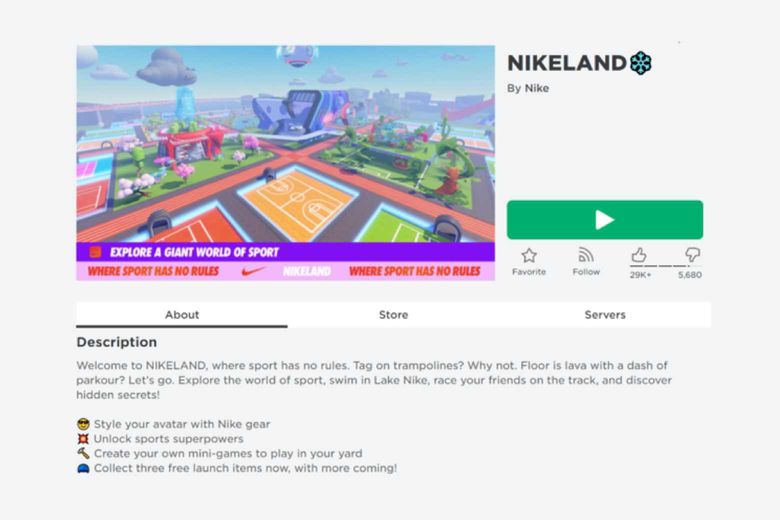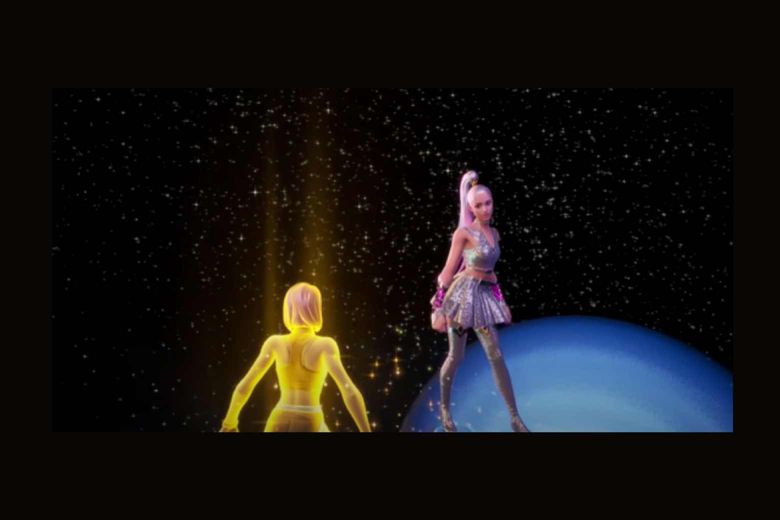
Vimal Patel16/03/22
7 min read

An ancient Chinese proverb tells us: “When the winds of change blow, some people build walls and others build windmills.“
As the digital revolution strives on, and those winds turn to breezes, charities face a decision: do they build higher walls or do they build more windmills?
Innovation can be scary. What if you get it wrong and your project falls flat on its face? What if the latest digital craze becomes a fad?
But innovation can be incredible. What if you get it right and your project lights up the world? What if the latest digital craze changes the way we live?

At Giant, our specialism is in charity web design. But that doesn’t stop us from identifying other technology opportunities to support the third sector in its development.
One such opportunity is the metaverse. Scary? Yes. A fad? Unlikely. Incredible? Without doubt.
That’s a very good question. Its Wikipedia entry describes the metaverse as ‘a network of 3D virtual worlds focused on social connection. In futurism and science fiction, the term is often described as a hypothetical iteration of the Internet as a single, universal virtual world that is facilitated by the use of virtual and augmented reality headsets.’ Hmmm…not very user-friendly.
Arguably the most understandable definition is from Quartz: “If the contemporary internet experience is two-dimensional - meaning you browse and scroll through it on a screen - the metaverse is 3D. You’ll be “walking” through it via connected headsets or glasses.”
But that definition doesn’t tell the whole story. How about this one: “The metaverse can be defined as a simulated digital environment that uses augmented reality (AR), virtual reality (VR), and blockchain, along with concepts from social media, to create spaces for rich user interaction mimicking the real world. Think social media as it exists today, but more integrated and immersive.”
They feel somewhat intangible - and that’s because the metaverse is an abstract concept. Just as the world wide web is. The first iteration of the web started in 1989, followed by Web 2.0 in 2004, and Web 3 is said to have planted its seeds in 2014 and we’re nearly at the stage of it blossoming into something very big indeed.
Those old enough will remember very basic Web 1.0 pages taking an age to load via a dial-up modem while Web 2.0 brought us responsive, interactive websites and social media platforms.

And now we’re readying for Web 3, or Web 3.0. Again, there is no one definition for this and it’s fair to say that it’s a major advancement on Web 2.0. In descriptions of Web 3.0, most talk about decentralisation and the use of blockchains; some talk about the realisation of widespread Internet of Things technology and pretty much all mention artificial intelligence.
Then there’s the metaverse: this virtual, infinite, anything-is-possible environment, which is predicted to be a sci-fi component of Web 3.0.
Instead of attempting to add to the definitions out there, we’re going to look at what you practically need and give you some ideas on how charities could take their first steps into the metaverse.
Let’s jump into the rabbit hole.
There are some things we are certain of: to access the metaverse you’re going to need hardware such as a VR headset or glasses, and you’re going to need a way into the world via your computer or smartphone.
Right now, if you’re in the majority and don’t own a VR headset, you can still take a look at what you could be experiencing by heading over to Decentraland or The Sandbox. You can play games, buy land, attend music concerts or create something yourself which you could potentially sell as a non-fungible token (NFT).

One big name is already making waves in the metaverse. Nikeland - part of the environment created by global gaming phenomenon Roblox - has been visited more than 10 million times and allows users to take part and create their own sports and challenges.
Ariana Grande held a virtual gig in Fortnite’s metaverse environment, while Gucci, Ralph Lauren and Burberry are some of the fashion brands which have dabbled in virtual events.

We also know that the infrastructure to support universal entry into the metaverse doesn’t yet exist - and it could be years away. While that means the meta audience might be relatively small, it provides the opportunity to be an early adopter.
Charities which dip their toes into the metaverse’s waters will, in all likelihood, grab a fair bit of attention.
One of the most obvious routes into the metaverse is through gaming, an area which is providing increasing support for the third sector. Virtual reality provides gamers with an immersive experience and is already the main metaverse attraction.
There are more than 46million gamers in the UK; more than 3billion in the world. It’s safe to say you’ve got a massive audience to tap into. But a gamer isn’t a gamer isn’t a gamer. There are big variations in what they play, how long they play and how much they spend. Here’s a fascinating breakdown of gaming personas.
The early adopters of metaverse gaming are likely to be hardcore gamers desperate to see what the fuss is about, and we’ve seen evidence of this specific community supporting good causes. Charities have also wised up to the opportunity.
Serious gamers use streams to show off their skills, and Help for Heroes has created its own gaming platform which allows people to play and raise funds at the same time.

The Air Ambulance talks about streaming, as does Children With Cancer, and there’s even a UK charity, Special Effect, which devotes its time to helping disabled people play video games.
So what about the metaverse? Just as we’ve seen with Nike and Roblox, you don’t have to be a gaming brand to get in front of gamers, but you can offer something fun to engage with a potentially completely new audience.
An animal charity could create a game to encourage users to work together to rescue their furry friends; a children’s hospice could create a virtual equivalent of themselves and encourage visits through gamification; an international charity could create games set in virtual representations of different regions of the world.
You may have heard the marketing slogan ‘the only limitation is your imagination’. Where the metaverse is concerned, for once this might actually be true.
If the metaverse truly is to become an alternative, virtual existence where people will be able to meet, play, work, learn, spend money, and so much more, then you can perhaps forgive us for not being able to think big enough just yet. Maybe our imaginations need levelling up.
From a practical perspective, virtual meetings could overtake our Zoom-filled days. Fashion brand Gymshark has tested the VR functionality in Meta’s Horizon Workrooms and posted a pretty basic, yet intriguing, video about how it went.

Charities could host virtual gatherings for supporters, and lead them into the projects they’ve supported. Imagine supporting a preferred charity and then being guided through the village where your support has helped build a new school.
Virtual meetings could also be used for direct service delivery. VR systems can now help train doctors, assist surgeons in planning operations and educate patients - so imagine how it could be applied across a range of areas.

An idea we particularly like is one of a virtual square - let’s call it CharityLand - containing multiple charities working together with the support of virtual volunteers and interested parties. Think of a LinkedIn or web community supercharged beyond anything most of us can imagine.
Translate it into the physical world and you can start thinking of a physical square encompassed by buildings, each belonging to a charity. But when you open their front doors, you don’t see an office or a shop; rather you’re taken into their world of projects, their events, meet people they’ve helped, talk to their celebrity patrons.
And you can open their neighbours’ front door and be drawn into their world, and so on.
It would also be a space for those people working in the charities to collaborate, not only with colleagues but people from other charities too. Training could be delivered across multiple teams from multiple charities; ideas for joint campaigns could be formed and worked on together.
And events could be held to support multiple charity partners. That Ariana Grande concert could now be held for 10 charities; those virtual gaming competitions could support a number of organisations; NFT auctions could be conducted in one place.
Visit CharityLand one day and you could be talking to Prince William, or playing in a charity football match alongside Lionel Messi and Marcus Rashford.
The only limitation is your imagination.
As with pretty much all technological innovation, there are numerous questions and some of those relate to our security. Only recently, the BBC published a worrying story about how grooming and exposure to adult material was discovered within the metaverse during an investigation.
Security in the metaverse will, inevitably, become an area which will need constant development and improvement - just as it is now. Age verification will likely be introduced for certain worlds, and it is highly likely that certain environments will be accessible only to verified members.
A CharityLand virtual square may well be one of those environments, and there certainly needs to be high levels of security where vulnerable or young people are receiving support, or taking part in organised events.
Analysts are already predicting never-before-seen security challenges - and solutions - so charities will need to be on top of how they are keeping stakeholders virtually safe.
The metaverse isn’t just coming; it’s already here and it’s growing. At some point in the future, charities are going to be entering it and when they do, they’re going to start creating some amazing experiences.
We can’t wait to be whisked away to watch that moment when a new hospital is opened, or to take part in a virtual pub quiz with the Duchess of Cambridge.
It could be 2023, it could be 2030, but your charity will be there and will, no doubt, be doing amazing things beyond our imagination right now. And when you do enter, please come and join us in CharityLand :)